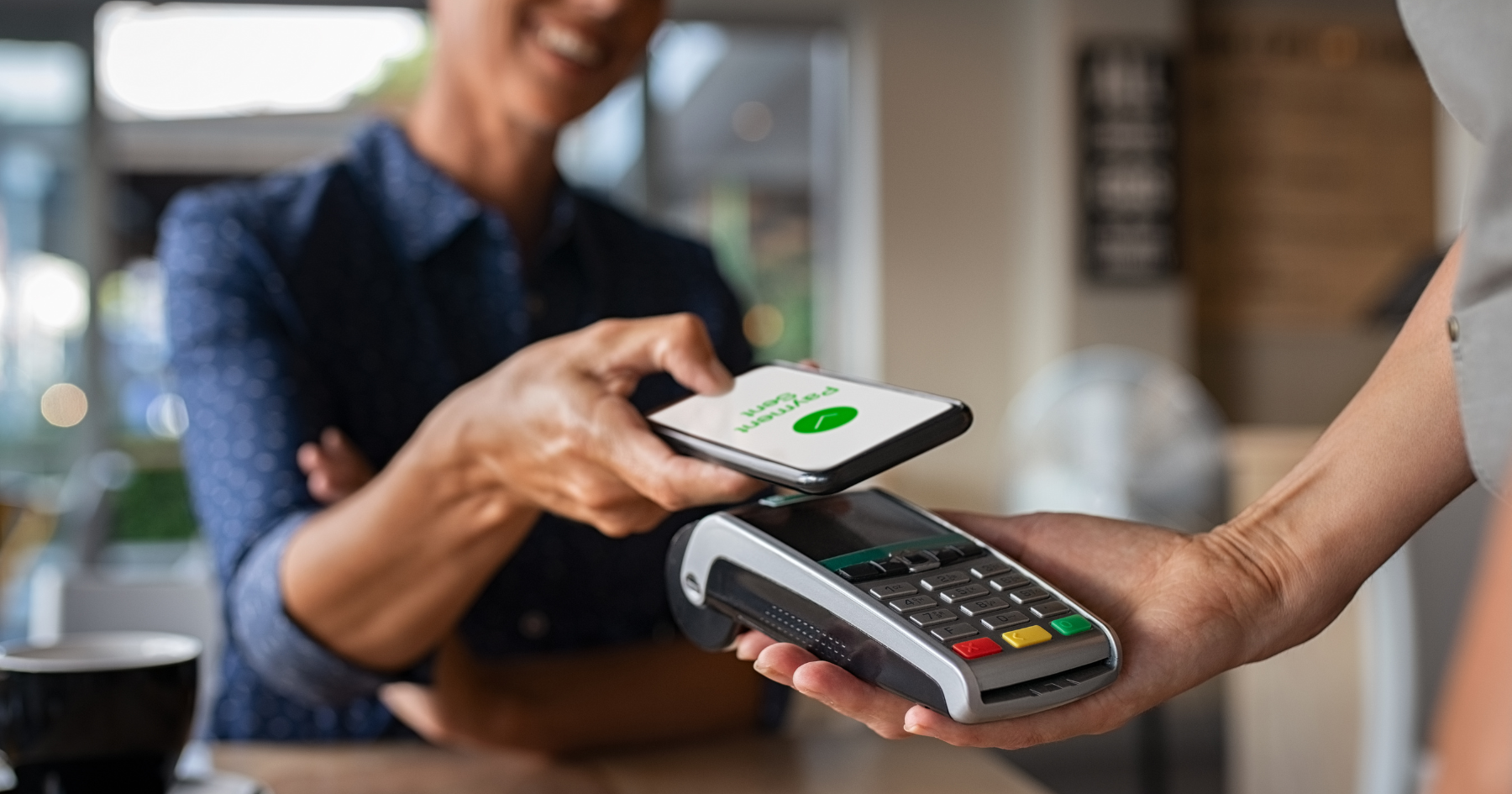Invoicing
Modern Invoicing Payment Trends: Apple Pay, Venmo, Crypto
As businesses navigate the digital revolution, the evolution of payment methods from traditional cash and credit cards to innovative options like Apple Pay, Venmo, and cryptocurrency is reshaping the landscape of transactions. This shift not only reflects technological advancements but also a change in consumer expectations for convenience, speed, and security.

As businesses navigate the digital revolution, the evolution of payment methods from traditional cash and credit cards to innovative options like Apple Pay, Venmo, and cryptocurrency is reshaping the landscape of transactions. This shift not only reflects technological advancements but also a change in consumer expectations for convenience, speed, and security.
In this article, we'll explore the cutting-edge trends in modern invoicing payment methods and how they're setting new standards for business transactions, offering insights into harnessing these technologies for business growth and customer satisfaction.
The Rise of Mobile Payments in Business Transactions
In today's fast-paced world, mobile payments have become a game-changer for businesses and consumers alike. Offering convenience, speed, and enhanced security, mobile payment solutions are rapidly gaining popularity, reshaping the way transactions are conducted. As consumers increasingly embrace their smartphones as wallets, businesses are recognizing the imperative to adapt to this trend, making mobile payment options an essential component of modern invoicing systems.
Apple Pay
Introduced by Apple, Apple Pay has quickly ascended as a leading mobile payment solution, renowned for its ease of use and security features. Utilizing near-field communication (NFC) technology, Apple Pay allows users to make payments with just a tap of their iPhone or Apple Watch, transforming the checkout process into a seamless experience. Its significance in the market is underscored by its widespread acceptance among retailers, service providers, and even within apps and websites, marking it as a critical payment method for businesses to consider.
Benefits of integrating Apple Pay into your invoicing system
Integrating Apple Pay into your invoicing system offers numerous benefits. For one, it provides a frictionless payment experience for your clients, potentially reducing payment delays. The security features of Apple Pay, including biometric authentication and tokenization, offer clients peace of mind, knowing their payment information is protected. Additionally, offering Apple Pay can enhance your business's image as modern and customer-focused, appealing to a demographic that values convenience and technology.
How to set up Apple Pay for business invoicing
- Verify Payment Gateway Support: Begin by confirming that your current payment gateway supports Apple Pay. This is a crucial first step as it ensures compatibility and a smoother integration process. Most leading payment gateways already support Apple Pay, which simplifies the setup for your business.
- Sign Up for a Merchant Account with Apple Pay: Once you've confirmed support, the next step is to sign up for a merchant account with Apple Pay through your payment processor. This account is essential for processing payments made with Apple Pay.
- Integrate Apple Pay into Your Invoicing or E-commerce Platform: After setting up your merchant account, you'll need to integrate Apple Pay into your invoicing system or e-commerce platform. This step might require some technical know-how, so consider seeking assistance from your platform provider or hiring a developer if necessary.
- Inform Your Clients: With Apple Pay integrated, the final step is to let your clients know that you now accept payments through Apple Pay. Update your invoices and payment pages to include the Apple Pay mark, clearly indicating this new payment option. This not only offers convenience to your clients but also modernizes your payment acceptance methods, keeping your business up to date with digital payment trends.
Venmo
Venmo, a mobile payment service owned by PayPal, has revolutionized peer-to-peer transactions with its social, easy-to-use platform. Initially popularized for splitting bills and casual transactions among friends, Venmo's user-friendly interface and social aspects have propelled its growth. Its impact extends beyond personal use, as more businesses are adopting Venmo to accommodate customers who prefer this payment method for its convenience and simplicity.
Advantages of accepting Venmo payments for businesses
Accepting Venmo payments offers several advantages for businesses. It caters to a younger, tech-savvy audience that appreciates the ease and familiarity of using Venmo. The social feed feature can also serve as a subtle form of marketing, as payments can include notes that are visible to the payer's network. Additionally, Venmo can expedite payments, improving cash flow with its quick transfer options.
Implementing Venmo payments for customer invoices
To implement Venmo payments for customer invoices, you'll first need to set up a business profile on Venmo, which allows you to accept payments legally and provides additional features suited for businesses. Once your profile is established, you can integrate Venmo as a payment option on your invoicing platform, similar to other payment methods. Ensure that your invoicing system can generate a QR code or a Venmo link, making it easy for clients to pay directly from their Venmo app. Inform your customers about the availability of Venmo as a payment option, highlighting the convenience and ease it brings to the payment process.
Cryptocurrency: The New Frontier in Business Payments
The digital revolution has ushered in the age of cryptocurrency, a form of digital or virtual currency that uses cryptography for security. With the growing interest in cryptocurrencies like Bitcoin, Ethereum, and Litecoin, these digital assets are becoming more than just investment vehicles—they're being adopted as a viable payment method for businesses worldwide. The allure of cryptocurrencies lies in their potential to simplify transactions while offering new levels of privacy and security, marking them as the new frontier in business payments.
However, it's important to approach this new frontier with an understanding of the inherent volatility within the crypto market. Prices of cryptocurrencies can fluctuate wildly in short periods, which could impact the real value of payments received by businesses. Additionally, while interest in using cryptocurrencies for transactions is growing, it's still not as widespread as traditional payment methods, which means businesses considering crypto payments should evaluate their customer base's readiness and willingness to use such currencies.
Benefits of Accepting Cryptocurrency
One of the most compelling advantages of accepting cryptocurrency is the potential for lower transaction fees compared to traditional online payment systems. Cryptocurrency transactions bypass the need for bank intermediaries, which often results in reduced transaction costs.
Furthermore, cryptocurrencies make international payments easier and cheaper by eliminating currency exchange fees and the waiting periods associated with bank transfers, making them ideal for global businesses.
Cryptocurrency transactions are secured by blockchain technology.), offering a high level of security through encryption and decentralization. This security feature is appealing to businesses concerned with data breaches and financial fraud. Moreover, accepting cryptocurrency positions a brand as forward-thinking and innovative, attracting a tech-savvy customer base that values privacy, security, and the efficiency of blockchain technology.
How to Start Accepting Crypto Payments
Integrating cryptocurrency payments into your business operations can be straightforward with the right approach. Here's a step-by-step guide:
- Educate Yourself and Your Team: Understand the basics of cryptocurrency and blockchain technology to make informed decisions.
- Choose a Cryptocurrency Payment Processor: Select a payment processor that supports cryptocurrency transactions. Popular options include BitPay, Coinbase Commerce, and CoinPayments.
- Set Up a Merchant Wallet: Sign up for a digital wallet where you can receive and store cryptocurrency payments. Ensure it's secure and supports multiple cryptocurrencies.
- Integrate Cryptocurrency Payments into Your Payment System: Use APIs provided by your chosen payment processor to integrate cryptocurrency payments into your website or invoicing system.
- Decide on Conversion: Decide whether you'll convert cryptocurrency payments to your local currency immediately upon receipt to avoid market volatility or hold the cryptocurrency.
- Educate Your Customers: Inform your customers that you now accept cryptocurrency by displaying it on your website, marketing materials, and invoices.
- Comply with Legal and Tax Obligations: Understand and adhere to the legal and tax implications of accepting cryptocurrency in your jurisdiction.
Overview of Popular Platforms and Wallets for Business Use
For businesses ready to dive into cryptocurrency, several platforms and wallets stand out for their reliability, user-friendliness, and security:
- BitPay: Offers a comprehensive suite for accepting cryptocurrencies, converting them into fiat currency, and making bank deposits.
- Coinbase Commerce: Allows businesses to accept multiple cryptocurrencies and seamlessly integrate crypto payments into their checkout process.
- CoinPayments: Provides a wide range of cryptocurrency payment services with support for over 1,200 cryptocurrencies.
Choosing the right platform and wallet depends on your business needs, including the cryptocurrencies you want to accept, the level of integration required, and whether you plan to convert cryptocurrencies to fiat currency.
Navigating the Challenges of Modern Payment Methods
While the adoption of modern payment methods like Apple Pay, Venmo, and cryptocurrency can revolutionize how businesses handle transactions, it's not without its challenges. The volatility of cryptocurrency values, security concerns associated with online transactions, and the need to cater to diverse customer preferences are just a few hurdles businesses must overcome. Understanding these challenges is the first step toward mitigating them, ensuring a smooth and secure transaction process for both the business and its customers.
Security Measures and Best Practices
In the digital age, securing transactions and protecting customer information are paramount. Here are essential tips for enhancing security:
- Use Reputable Payment Processors: Partner with established and secure payment processors for transactions.
- Implement Strong Encryption: Ensure that all transaction data is encrypted, particularly when dealing with sensitive customer information.
- Regularly Update Security Protocols: Stay updated with the latest security measures and update your systems accordingly.
- Educate Your Team: Make sure your team is aware of the latest phishing scams and security threats.
- Enable Two-Factor Authentication (2FA): Encourage customers to use 2FA for an added layer of security.
- Monitor Transactions: Keep an eye on transaction patterns to quickly identify and address any suspicious activity.
- Data Privacy Compliance: Ensure your payment systems comply with data protection regulations like GDPR or CCPA.
Understanding and Adapting to Customer Preferences
Success in today's market requires businesses to be attuned to their customers' payment preferences. Conducting regular surveys or analyzing payment method usage can provide insights into what your customers prefer. Offering a variety of payment options can satisfy diverse preferences and enhance customer satisfaction. Moreover, being flexible and willing to adopt new payment technologies as they emerge can help you stay ahead of competitors and meet your customers' evolving needs.
Final Thoughts
As we conclude, it's clear that embracing modern payment methods in invoicing is not just a trend but a necessity for businesses aiming to thrive in the digital era. These technologies offer the dual benefits of enhancing the customer experience and streamlining business operations. Yet, as with any innovation, they come with challenges that require diligent management and a proactive approach.
In navigating this landscape, solutions like Cassie Invoice stand out for their ability to harmonize with the latest payment trends while ensuring transactions remain smooth, secure, and in tune with customer expectations. By integrating modern payment options and adhering to best practices in security and customer service, Cassie Invoice exemplifies how businesses can transcend traditional boundaries and step confidently into the future of transactions.
Mary Achurra
2024-04-15
Get the cheat sheet and checklist for free
The software tools evaluation checklist will help you choose the best solution for your business.
Latest articles
Get started for free today
Get 21 days free access to our platform and improve your business.





